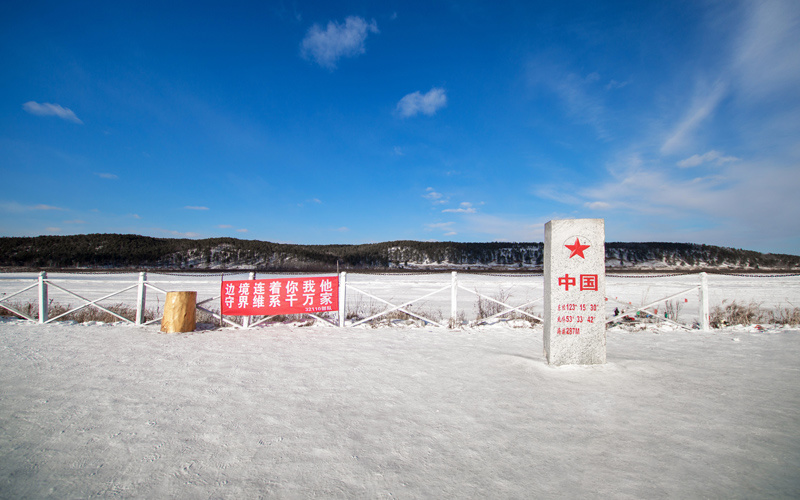A Complete Analysis of the Practical Applications of Single-Soldier Radar
Release time:
2025-03-13
Single-soldier radar has mature application cases in many fields, including military, law enforcement, security, and search and rescue. Its high portability, real-time monitoring, high-precision detection, and intelligent analysis capabilities help various users effectively improve the efficiency and safety of task execution.
Military reconnaissance and counter-terrorism cases
Battlefield reconnaissance: In frontline combat environments, complex terrain often becomes a major obstacle to military operations, and vegetation-dense jungles and areas with numerous buildings make it difficult for traditional reconnaissance methods to be effective. For special forces on missions, single-soldier radar becomes their indispensable "eyes." For example, in extremely complex surrounding environments where the enemy may be hiding in any corner, soldiers use the real-time monitoring function of the single-soldier radar. Its high-precision detection capability can penetrate vegetation and buildings, clearly capturing the movement trajectory of enemy personnel. Relying on this advantage, the troops preemptively grasped the enemy's deployment and intentions, successfully avoiding multiple ambushes. This not only greatly improved the success rate of the mission but, more importantly, ensured the safety of the soldiers' lives, fully demonstrating the outstanding ability of single-soldier radar to provide reliable intelligence support for combat operations in complex battlefield environments.
Border security and anti-smuggling
Border patrol application: The border areas of many countries have complex and diverse terrain. Mountainous areas have undulating terrain and dense forest vegetation, making traditional visual patrol methods difficult to cover a wide area, and even less effective at night. To address this challenge, border patrol teams are equipped with single-soldier radar. At night, when illegal border crossers attempt to cross the border, the single-soldier radar, with its long-range detection capabilities, can detect personnel movement signals from several kilometers away. For example, in a mountainous border area, a patrol team discovered several people attempting to illegally cross the border using single-soldier radar, issued a timely warning, and took action, successfully preventing the border crossing. In this complex terrain, the single-soldier radar is not limited by light or terrain obstruction, providing strong technical support for border control and achieving efficient monitoring and early warning of cross-border activities.
Water smuggling control: On the coast, smuggling activities at night are highly concealed, and small smuggling vessels use the cover of darkness, making them difficult to detect by conventional patrol methods. Single-soldier radar plays a key role in coastal patrols. Border personnel use single-soldier radar to continuously scan the sea surface. Its high-sensitivity detection performance allows it to accurately identify tiny targets. Patrol personnel, based on the precise location information provided by the radar, quickly dispatched and successfully intercepted the smuggling vessels, effectively maintaining the safety and stability of the border waters, highlighting the advantages of single-soldier radar in precise detection and rapid response to small targets in anti-smuggling operations at sea.
Anti-drone monitoring
Anti-drone monitoring in sensitive areas: Airports and government buildings are highly sensitive areas, and illegal entry by drones can pose a serious security threat. Taking airports as an example, during a patrol mission around an airport, the situation in the sky was complex, with various aircraft coming and going frequently. Security personnel used single-soldier radar to closely monitor the low-altitude area. Its high-resolution detection performance can accurately identify the signal characteristics of drones among numerous signals. When a drone approached the airport at low altitude, the single-soldier radar quickly issued an alarm and tracked the drone's flight trajectory in real time. Security personnel, based on the information provided by the radar, took timely measures to intercept the drone, preventing the drone from invading the flight path and interfering with the normal takeoff and landing of flights, ensuring the safety of the airport's flights, and highlighting the precise detection and rapid warning capabilities of single-soldier radar in anti-drone monitoring in sensitive areas.
Anti-drone detection around military bases: Military bases, as important military facilities, are of paramount importance in terms of security. Around a certain military base, small drones may be used for illegal reconnaissance or sabotage. Single-soldier radar is deployed here for uninterrupted monitoring. Its powerful detection capabilities can detect invading small drones at a considerable distance. Once a drone enters the monitoring range, the radar immediately issues a warning signal, and the base security personnel respond quickly, taking corresponding measures to intercept and dispose of the drone based on the location and flight information provided by the radar, ensuring the secrecy and safety of the military base, and fully demonstrating the key role of single-soldier radar in anti-drone detection around military bases.
Search and rescue
Mountain search and rescue: Remote mountainous areas have complex terrain and harsh environments, making the search for missing persons extremely difficult. Single-soldier radar can quickly scan large areas. With its high-precision detection capabilities and the combination of external infrared sensing search and rescue equipment, even if missing persons are hidden in dense vegetation or valleys, they can be effectively detected. Through the signals fed back in real time by the radar, search and rescue personnel can quickly locate the missing persons, avoiding blind searches in the mountains, greatly improving search and rescue efficiency, reducing unnecessary search time, and buying valuable time for the life-saving of missing persons.
Critical infrastructure protection
Nuclear power plant security monitoring: Nuclear power plants, as important energy facilities, are of great importance in terms of safety. In the security system of a certain nuclear power plant, single-soldier radar is integrated into perimeter monitoring. Night and low-visibility periods are the focus of security attention. At this time, the external environment is complex, and it is difficult to effectively monitor with the naked eye. During night security patrols, single-soldier radar, with its high-sensitivity detection performance, can accurately detect intruders attempting to approach the outer fence of the nuclear power plant even under weak light conditions. The radar quickly issues an alarm and provides security personnel with precise location information of the intruders. Security personnel immediately take action based on this information, controlling the intruders before they can threaten the nuclear power plant, effectively ensuring the safe operation of the nuclear power plant, and fully demonstrating the advantages of single-soldier radar in precise detection and timely warning of intrusion behavior in nuclear power plant security monitoring.
Outdoor exploration and research
Field research and ecological protection: In wildlife conservation research, accurately understanding the nocturnal behavior patterns of animals is crucial for studying their ecological habits, but traditional observation methods often disturb the animals. In a wildlife study of a certain protected area, researchers used single-soldier radar for monitoring. The radar's non-interference monitoring function allows it to obtain the animals' movement trajectories and behavioral information in real time without affecting their normal activities. For example, at night, the radar can clearly observe the animals' foraging and migration behaviors, providing accurate data support for research work, ensuring the scientific and accurate nature of the research, and also avoiding interference with the animals' living environment.









